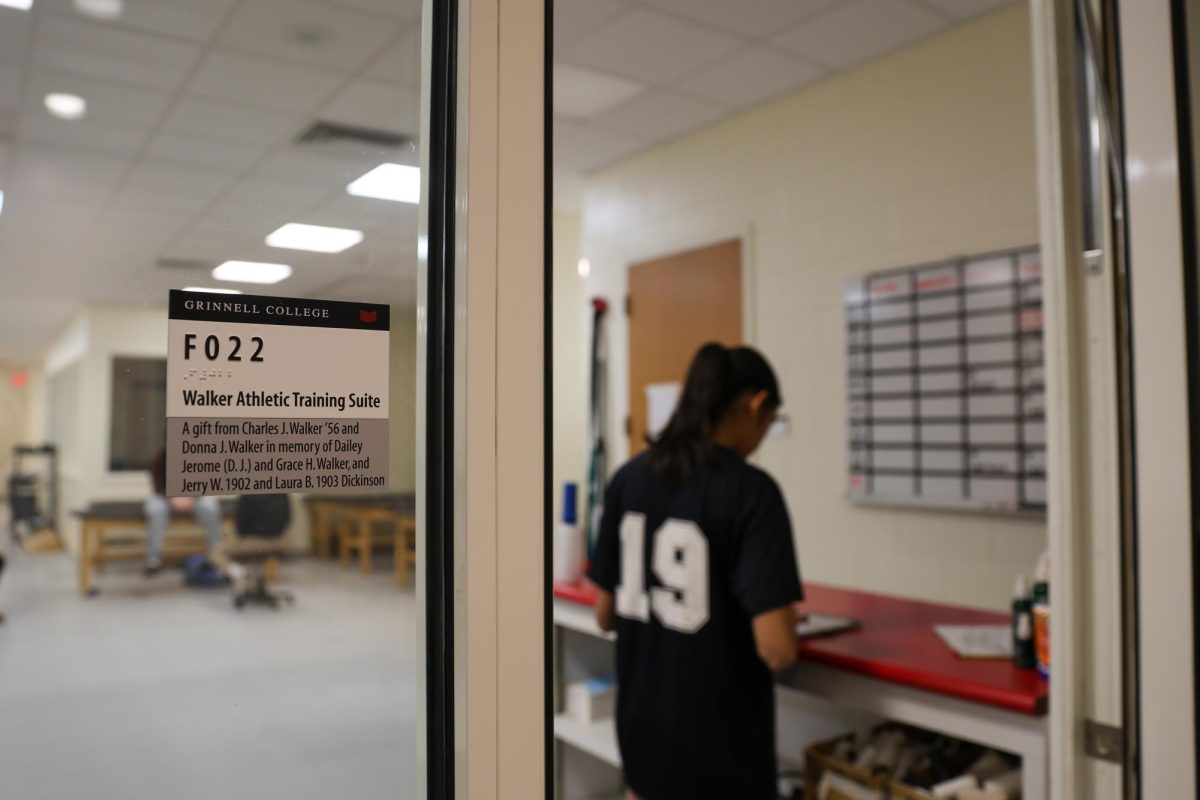It’s now been over two months since Bird electric app-share scooters arrived in Grinnell. In a city with little to no options for public transit, the presence of the scooters was noticeable for many and exciting for some. But how much can the company, which is trialing the scooters in Grinnell for a year, actually help with what is overall a major issue of infrastructure and accessibility within the city? Personally, I’m not convinced the scooters will do much for the community in the long run — if they even stay around.
I was skeptical at first about the scooters’ usefulness and the effect they could have on public accessibility in Grinnell. Several years ago, I was living in the Boston area during the rise of Lime bikes, a fleet of bright-green conventional and electric “dockless” bikes that promised an easier bikeshare experience than that of traditional dock-linked bikes from Bluebikes (creative company names are clearly a key facet of the industry).
And it’s true that dockless bikes and scooters have a huge advantage over their docked compatriots. Being able to pick up and park a bike anywhere in the city is certainly more convenient than having to seek out a designated bike station — and more than one Bostonian took full advantage of that convenience and chose to deposit their bike post-ride in the Charles River.
(Ah, Boston. I do miss you).
But dockless vehicles also pose a much greater risk to accessibility in public spaces, as they rely on their users’ willingness to take the few extra seconds to park alongside a sidewalk or ramp instead of across it. Bird seems to be attempting to mitigate this problem by making users photograph their parked bike in order to end their rides, as well as adding a small (and, honestly, easy-to-miss) “NO RIDING ON SIDEWALKS” instruction printed on the side of the scooter body.
But I wanted to know: does the Bird experience outpace the potential problems? Scooters have a special place in my heart, bringing back fond memories of the beat-up Razor scooter that was my favorite form of transportation in elementary school, as well as its tendency to partially disassemble itself spontaneously and grind a shower of sparks from the sidewalk notwithstanding. So could Grinnell’s public transit issue be solved with one fleet of elegant monochrome space-age rechargeable scooters?
(The short answer is no. The long answer is also no, but with more citations.)
My first attempt at a Bird scooter ride was in late August, shortly after the start of classes. I needed to drop a few things off at the JRC and head back home; surely, I thought, this would be an ideal short ride to try out a scooter and see how it worked — right?
Wrong.
Like many other students, I quickly discovered that connection and battery issues were rampant among the scooters during that week. Curious as to how these problems could have come about, I discovered that Bird generally relies on gig workers to maintain, collect, and charge the scooters. But in Grinnell, the city with up to one Uber, that model is less than ideal, so Bird has to send a regional employee into the area once in a while to reorganize and charge the scooters. It’s just one way in which putting a big-city transportation concept into a much smaller community has run into roadblocks so far.
A few weeks later, I started to see fellow students taking the Birds around town, so I decided to make another attempt. Leaving D-Hall one day, I was elated to discover that I could now unlock any one of the several scooters parked outside. Now I too could take a motorized trip around Grinnell and/or cosplay as a tech bro for the low price of $1 to start plus 39 cents per minute (more on that in a second). I scanned in the code of one scooter leaning jauntily against the wall of the JRC, read the app’s disclaimer about helmets and not parking on sidewalks, and set off to McNally’s in search of a packet of frozen spinach.
My first impression of the scooter? Wiggly. They’re harder to control than I expected, and there’s a definite learning curve to using the accelerator on the right handlebar. Also, they’re really not ideal for carrying anything other than a backpack worn with both straps on; my attempt at putting my shopping bag on the handlebars, though technically successful, was nerve wracking and didn’t help my efforts to have a more stable ride.
Grinnell has yet to see a major scooter accident, but I worry that it may not be long before one happens. The app reminds users to wear a helmet, but the whole scan-and-go model of dockless scooter-shares means that most people won’t have a helmet on them when they come across a scooter. E-scooter injuries are already being reported in Cedar Rapids, some minor and some life-threatening, and though the Bird app also says to ride in bike lanes, Grinnell really doesn’t have a safe way to ride on most roads — most don’t even have a sufficient shoulder to bike or scooter next to cars. The scooters also have no shock absorption other than the tires themselves, at least that I could see, so riding on sidewalks is often bumpy and jittery, making it easier for riders to lose control. They go fast enough that I worry a major jostle could cause an accident for an unprepared rider (I managed to get one scooter to go 19.7 miles per hour the other day; others topped out at 16 or 18 depending on the terrain).
And then there’s the cost. A 13-minute round trip last weekend came to $7.55 for me, for less than one mile each way. The $1 startup cost means that short trips add up quickly, and longer trips, as previously noted, run into the issues with sidewalk and roadside riding.
That’s not to say I didn’t enjoy the scooter rides I’ve taken so far, because I did; they’re fun, fast, and easy, much less of a hassle than unlocking my bike and then finding a place to park and lock up again. I’ll probably use them again, too, perpetually two minutes late for things as I tend to be. But as a long-term solution to Grinnell’s car-centric transport model? I just don’t see it. There’s also the question of whether the scooters will even stick around. Bird is in Grinnell right now on a one-year trial conducted separate from the oversight of the city administration, so it’ll be up to the company whether or not they continue offering service in Grinnell.
But e-scooters do show signs of being the future of app-share vehicles as long as the model is viable. Even Lime, operator of the unintentionally amphibious bikes, announced in 2020 that it was shuttering its bikeshare model in Boston in favor of focusing on scooters instead. So who knows? Maybe one day we’ll all be taking scooters to and from work. But for that to happen, at least a few kinks need ironing out first.


























































